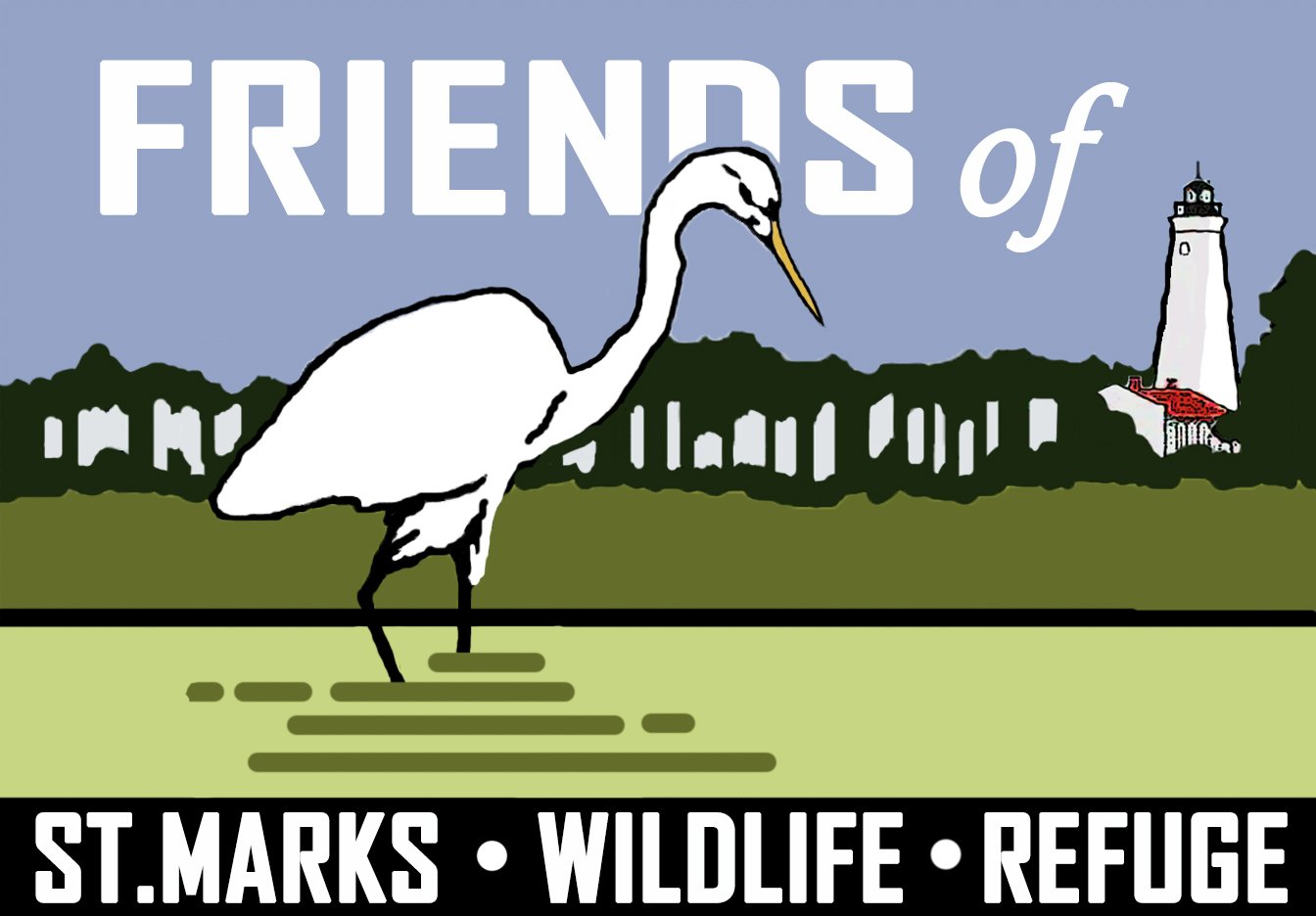Birding at St. Marks
Over two thirds of the accepted bird species in Florida have been recorded at St. Marks NWR, including the only state record of Lesser Sand Plover. Of the 353 species on the Refuge list, 253 occur annually and another 51 are rare, but are seen on a recurrent basis. The remaining 49 species are accidental.
The Refuge is a four-season birding destination with key species occurring in every month. The Refuge’s location on the Northern Gulf Coast means that it can attract Southern breeders like Purple Gallinule and Reddish Egret that are near the Northern limit of breeding range, Northern species like American Black Duck and Common Goldeneye that are at the Southern limit of their wintering range and an array of neo-tropical migrants in spring and fall. Additionally, the Refuge has sought-after resident species like Black Rail and Red-cockaded Woodpecker.
Seasonal Trends
June / July / August
Black and White Warbler
June sees the end of spring migration and July starts fall migration. During this period, the majority of St. Marks breeding species (including Prothonotary Warbler, Acadian Flycatcher, Wilson’s Plover and Least Tern) complete their breeding cycle and leave. July and August see a progressive increase in migrants as early warblers (including Black-and-white, Yellow, Prairie and American Redstart), shorebirds (including Spotted, Semipalmated, Western, Pectoral and Least Sandpipers, Whimbrels and Marbled Godwits), and swallows (including Bank, Barn, Northern Rough-winged and Tree) migrate through the refuge. The first Blue-winged Teals and Bald Eagles return for the winter.
September / October / November
Northern Harrier
Migration picks up as trans-Gulf migrants pass through the Refuge and wintering species arrive. This period sees a significant increase in both species diversity and total numbers of birds on the Refuge. Migrant songbirds passing through include Blue-winged, Magnolia and Blackburnian Warblers, Veery and Swainson’s Thrush, Scarlet Tanager and Rose-breasted Grosbeak. Wintering birds arriving at the Refuge during this period and include Eastern Phoebe and Vermilion Flycatcher, ducks (including Northern Shoveler, Gadwall, Canvasback, Redhead, American Wigeon, Green-winged Teal and Northern Pintail), sparrows (including Savannah, Song and Swamp). Ring-billed Gulls, Dunlin, Northern Harrier, American Bittern, White-faced Ibis, Hermit Thrush, Nelson’s Sparrow, Palm and Yellow-rumped Warblers also return to the Refuge.
December / January / February
Northern Parula
This is the best time to look for late-migrating Sandhill Crane, Snow and Greater White-fronted Geese. Sora and Virginia Rail return to the Refuge’s marshes. Early in this period, the remaining winter ducks arrive (Hooded and Red-breasted Mergansers, Mallard, Lesser Scaup, American Black Duck, Ruddy, Bufflehead and Common Goldeneye). During the winter months, St. Marks hosts a regular contingent of 19 duck species and 15 shorebird species among a total of almost 200 species that can be found on the refuge. Late in this period spring migration begins as Purple Martins and Northern Parula show up and Mallard, American Black Duck and a few other duck species begin to leave.
March / April / May
Mississippi Kite
During this period the Refuge’s winter birds depart; spring migrants pass through and summer breeders return. Species diversity peaks in April and then drops sharply through May. Most of St. Mark’s ducks leave, but a few stragglers always hang on through this period. Shorebird numbers drop as wintering birds, especially the abundant winter Dunlin leave, but shorebirds migrating up from South America, including White-rumped Sandpiper, continue to pass through the Refuge throughout this period. April migration sees over 47 species that are found on the refuge only on migration and the return of Common Nighthawk, Gull-billed Tern and Mississippi Kite. By the end of this period, most of the Refuge breeding species are on their nests or feeding young.
"Birding at St. Marks" was provided by Don Morrow
local birder and Refuge volunteer
Checklist - The Birds of St. Marks National Wildlife Refuge
by Don Morrow is available in the Nature Store






